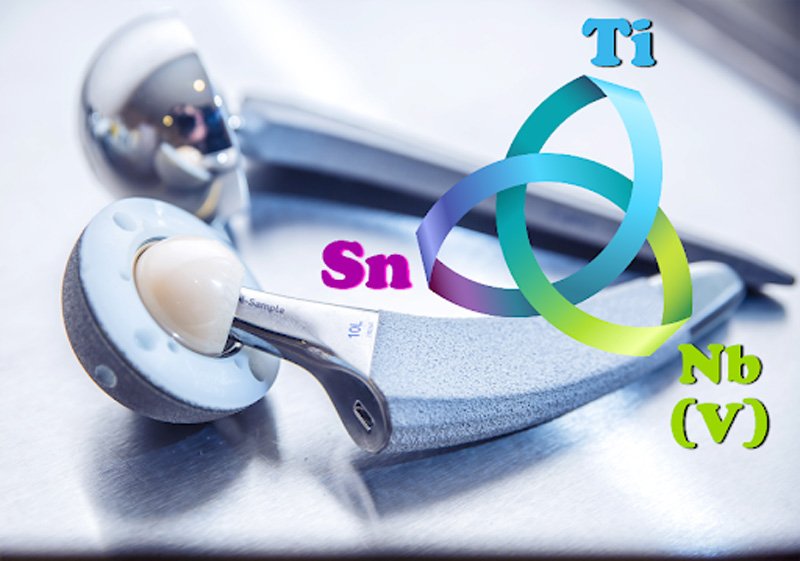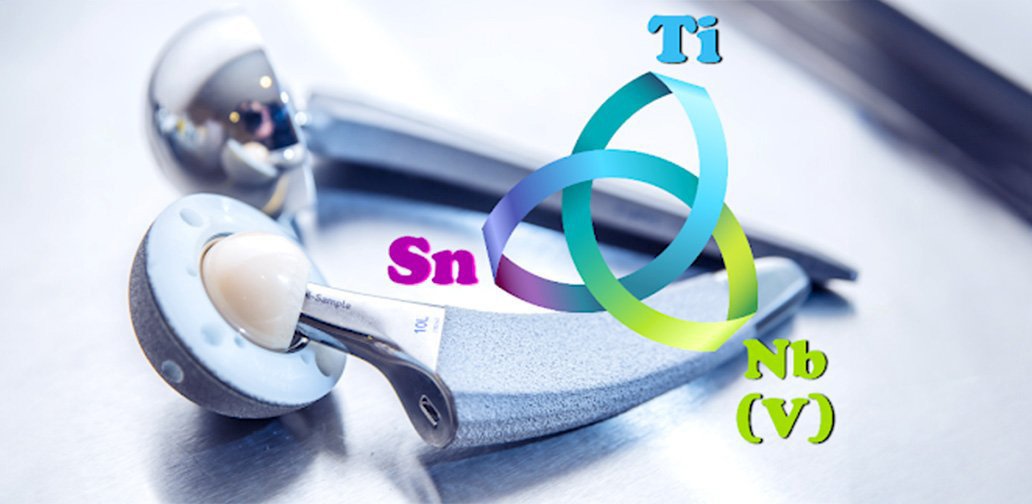Beta(β)-type titanium (Ti) alloys are renowned for their strength, formability and resistance to harsh environments. This, along with their excellent biocompatibility, has made them adequately suited for implants and prosthetics, from joint replacement to stents.
However, under certain conditions a brittle omega phase can form, making the material prone to breaking. Whilst it is known that adding tin (Sn) negates this, and makes β-type Ti alloys stronger, the exact mechanics behind this has continued to puzzle scientists. That is until now.
A research team led by Norihiko Okamoto and Tetsu Ichitsubo from Tohoku University's Institute for Materials Research (IMR) has revealed how this occurs. Their revelation came via a systematic investigation using model titanium-vanadium (Ti-V) alloys, which included a combination of experiments and theoretical analyses.
"Our findings reveal that the multi-element interaction between Ti, V, and Sn, coupled with the anchoring effect of Sn atoms, work together to completely suppress the formation of the detrimental omega phase, exemplifying the so-called cocktail effect," explained Ichitsubo.
Just like skillfully blending various drinks often results in a cocktail that is more delicious than imagined, the cocktail effect in the metallurgical field refers to the phenomenon where mixing multiple elemental components in a well-balanced ratio can lead to superior properties beyond expectations.

"This cocktail effect is a prime example of the phenomena observed in high-entropy materials, highlighting the importance of considering multi-element interactions in alloy design," adds Okamoto. "This discovery underscores the significance of accounting for multi-element interactions not just for biomaterials but also in the broader context of alloy design."
Understanding the finite details of strengthening β-type Ti alloys will help improve biomedical titanium implants, which provide invaluable support for people suffering from degenerative bone condition or aging populations.
The study, which was published in the journal Acta Materialia on April 29, 2024, drew heavy inspiration from the pioneering work by Shuji Hanada and Naoya Masahashi, emeritus professors at IMR.

- Publication Details:
Title: Why is Neutral Tin Addition Necessary for Biocompatible β-Titanium Alloys? - Synergistic Effects of Suppressing ω Transformations
Authors: Norihiko L. Okamoto, Florian Rombauer, Martin Luckabauer, Wolfgang Sprengel, Ryota Abe, Tetsu Ichitsubo
Journal: Acta Materialia
DOI: https://doi.org/10.1016/j.actamat.2024.119968
Contact:
Norihiko Okamoto,
Institute for Materials Research
Email: nlokamoto tohoku.ac.jp
tohoku.ac.jp
Website: https://nlokamoto.wordpress.com
Tetsu Ichitsubo,
Institute for Materials Research
Email: tichi imr.tohoku.ac.jp
imr.tohoku.ac.jp
Website: https://ilab.imr.tohoku.ac.jp/index.html


